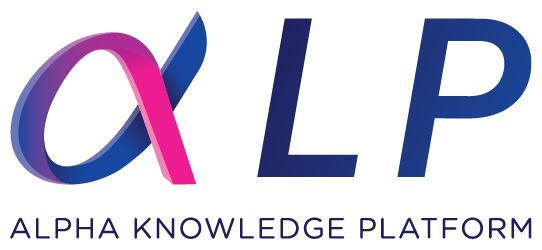TickerTape
Weekly Global Stablecoin & CBDC Update
This Week’s Stories
- Tether Announces US-Regulated USA₮ Stablecoin
- UK Crypto Industry Opposed BoE’s Proposed Stablecoin Holding Limits
- Yala Stablecoin De-Pegs to $0.21 Following Exploit
- SEC Chairman Vows to Notify Violations before Action
- OECD: Improving Digital Financial Literacy for Crypto Users
- Why Banks Fear Stablecoins
- Northern Colorado Bankers Concerned About GENIUS Act Impact
- CFOs Need Stablecoin Bridging Knowledge
- Kredete Raises $22M for African Stablecoin Infrastructure
- GFTN & BoT: Bangkok Digital Finance Conference Begins
- Google Partners with Coinbase to Launch AI Payments Protocol
- Coinbase Defends Stablecoins Against Banking Industry Claims
- BdF Deputy Warns Non-Dollar Stablecoins Could Weaken US Currency Role
- DBS to Feature Franklin Templeton’s sgBENJI Token
- MoneyGram Launches Stablecoin-Powered X-Border Finance App
- AxCNH Becomes First Licensed Yuan-Pegged Stablecoin
- BDACS Launches KRW1 Stablecoin
- Samsung and Coupang Join Stablecoin Market
- Swiss Bankers Association: Deposit Token PoC Results Report
- DBS Hong Kong Completes e-HKD+ Phase 2 Pilot
- ECB Report: Central Bank Money as a Catalyst for Fungibility
- BoC Urges Stablecoin Regulatory Framework
- Banca d’Italia Calls for Multi-Issuance Stablecoin Regulations Clarity
- Coinbase CEO Defends Stablecoin Rewards
- Plasma Blockchain Launches Mainnet Beta
- PYUSD Expands to Tron, Avalanche, Sei
- BIS Report: Wholesale Central Bank Money in the Context of Technological Innovation

Tether announced the launch of USA₮, a U.S.-specific stablecoin designed for American residents, with former White House crypto adviser Bo Hines appointed as CEO of the new venture. The launch, expected by year-end 2025, represents Tether’s strategic pivot to strengthen its presence in the U.S. market following the GENIUS Act’s regulatory framework. USAT will be issued by Anchorage Digital Bank with reserves custodied by Cantor Fitzgerald, operating on Tether’s proprietary Hadron platform. CEO Paolo Ardoino emphasized this move counters competitors attempting to establish monopolistic positions in the U.S. stablecoin market. The initiative aligns with GENIUS Act requirements for liquid asset backing and monthly reserve disclosures while maintaining Tether’s global USDT operations.
Key Takeaways:
- Tether launches USAT stablecoin for U.S. market by year-end with former White House adviser Bo Hines as CEO
- USAT issued by Anchorage Digital Bank with Cantor Fitzgerald as custodian, operating on Hadron platform
- Strategic move to strengthen U.S. presence following GENIUS Act regulatory framework implementation
- Complies with requirements for liquid asset backing and monthly reserve transparency reporting
- Maintains separate USDT operations globally while creating compliant U.S. alternative
- Intensifies competition with Circle’s USDC in regulated American stablecoin market
Why It Matters:
- Demonstrates Tether’s commitment to regulatory compliance and U.S. market expansion strategy
- Could accelerate mainstream adoption of Tether products through regulated domestic channels
- Intensifies competition in U.S. stablecoin market dominated by Circle’s USDC
- Shows how GENIUS Act successfully attracts major international stablecoin issuers to comply
- May influence other foreign stablecoin providers to develop similar U.S.-compliant alternatives
- Reflects broader trend of crypto companies embracing rather than avoiding U.S. regulation
The UK cryptocurrency industry is urging the Bank of England to abandon proposals limiting individual stablecoin holdings to £10,000-£20,000 ($13,600-$27,200) and business holdings to £10 million ($13.6 million). Coinbase and UK trade groups told the Financial Times these limits would be unworkable and leave Britain with stricter oversight than the U.S. or European Union. The BoE argues restrictions are necessary to prevent deposit outflows from traditional banks that could weaken credit provision and financial stability. BoE executive director Sasha Mills cited the need to mitigate risks from sudden deposit withdrawals and scaling of new systemic payment systems. Officials indicated the caps could be transitional measures while the market develops.
Key Takeaways:
- UK crypto industry opposes BoE’s proposed £10K-£20K individual and £10M business stablecoin ownership limits
- Coinbase and trade groups argue limits would create stricter oversight than U.S. or EU frameworks
- BoE justifies restrictions to prevent bank deposit outflows threatening credit provision and financial stability
- Officials suggest caps could be transitional measures during market development phase
- Proposal aims to mitigate risks from sudden withdrawals and systemic payment system scaling
- Highlights tension between innovation encouragement and traditional banking system protection
Why It Matters:
- Shows UK’s cautious approach to stablecoin regulation compared to more permissive international frameworks
- Could affect UK’s competitiveness as a global cryptocurrency and fintech hub
- Demonstrates ongoing tension between innovation promotion and financial stability preservation
- May influence other jurisdictions’ approaches to managing stablecoin systemic risk
- Could drive stablecoin businesses to more accommodating regulatory environments
- Reflects broader challenge of integrating digital assets with existing banking infrastructure
The Yala stablecoin (YU), a Bitcoin-native over-collateralized stablecoin backed by Polychain, lost its dollar peg on September 14, 2025, crashing to $0.2074 before partially recovering to $0.917 following a protocol attack. The exploit allowed attackers to mint $120 million worth of unauthorized tokens across Polygon, Solana, and Ethereum networks, with the attacker selling 77.6 million YU for USDC and converting proceeds to 1,501 ETH distributed across multiple wallets. Yala co-founder Vicky Fu confirmed the team is working with security experts including SlowMist and Fuzzland to investigate the incident while temporarily disabling Convert and Bridge functions. The attack highlights ongoing vulnerabilities in cross-chain bridge infrastructures and smart contract security.
Key Takeaways:
- Yala’s YU stablecoin crashes to $0.20 following $120M unauthorized minting exploit on September 14, 2025
- Attack affects multiple networks including Polygon, Solana, and Ethereum with 77.6M tokens sold
- Attacker converts proceeds to 1,501 ETH distributed across various wallets for fund obfuscation
- Yala disables Convert and Bridge functions while collaborating with security firms on investigation
- Incident exposes vulnerabilities in cross-chain bridge infrastructure and smart contract design
- Demonstrates ongoing challenges for smaller stablecoin projects competing with established issuers
Why It Matters:
- Highlights persistent security risks in cross-chain bridge infrastructure requiring enhanced protocols
- Shows vulnerability of smaller stablecoin projects to sophisticated exploit attacks
- Could accelerate regulatory focus on smart contract security standards and audit requirements
- Demonstrates importance of robust security measures for maintaining stablecoin peg stability
- May influence investor confidence in alternative stablecoin projects beyond established issuers
- Reflects ongoing challenges in balancing innovation with security in DeFi infrastructure
SEC Chairman Paul Atkins announced that the Securities and Exchange Commission will notify businesses of technical violations before taking enforcement action, marking a significant departure from the previous administration’s aggressive enforcement approach. Speaking to the Financial Times, Atkins vowed to give companies notice of technical violations before “bashing down their door,” signaling a more collaborative regulatory stance. This policy shift represents a fundamental change from the Biden-era SEC’s “regulation by enforcement” strategy that frequently caught crypto companies off guard with lawsuits and penalties. The new approach aims to provide clearer guidance and allow businesses to address compliance issues before facing formal enforcement proceedings, potentially reducing regulatory uncertainty for digital asset companies.
Key Takeaways:
- SEC Chairman Atkins promises to notify businesses of violations before enforcement action on September 14, 2025
- Marks departure from previous “regulation by enforcement” approach that caught companies off guard
- New policy aims to provide clearer guidance and allow compliance correction before formal proceedings
- Could significantly reduce regulatory uncertainty for crypto and digital asset companies
- Represents fundamental shift toward collaborative rather than adversarial regulatory approach
- May accelerate business confidence and innovation in digital asset sector through predictable oversight
Why It Matters:
- Could dramatically improve business confidence in crypto sector through predictable regulatory oversight
- Shows practical implementation of Trump administration’s pro-business regulatory philosophy
- May accelerate innovation and investment in digital assets through reduced regulatory fear
- Could influence other federal agencies to adopt similar collaborative enforcement approaches
- Demonstrates SEC’s commitment to fostering rather than hindering crypto industry development
- May reduce compliance costs and legal risks for digital asset businesses
The OECD published a comprehensive report, addressing the need to improve digital financial literacy among cryptocurrency users. The report defines digital financial literacy as the combination of knowledge, skills, attitudes, and behaviors necessary for individuals to safely navigate digital financial services and crypto assets. It emphasizes the growing importance of educating consumers about digital asset risks, security practices, and regulatory frameworks. The publication comes as cryptocurrency adoption expands globally and regulators seek to protect consumers while fostering innovation. The OECD recommends coordinated international efforts to develop educational programs, standardized terminology, and best practices for digital asset literacy initiatives.
Key Takeaways:
- OECD publishes comprehensive digital financial literacy report for crypto users.
- Defines digital financial literacy as knowledge, skills, attitudes, and behaviors for safe digital finance navigation
- Emphasizes growing need for consumer education about digital asset risks and security practices
- Recommends coordinated international efforts for educational programs and standardized terminology
- Addresses expanding cryptocurrency adoption requiring enhanced consumer protection measures
- Calls for best practices development in digital asset literacy initiatives across jurisdictions
Why It Matters:
- Provides international framework for addressing consumer education gaps in digital asset adoption
- Could influence national policies on crypto education and consumer protection initiatives
- Shows OECD recognition of cryptocurrencies as legitimate financial instruments requiring proper education
- May accelerate development of standardized digital asset education programs globally
- Demonstrates growing institutional focus on responsible crypto adoption through education
- Could reduce crypto-related consumer losses through improved financial literacy standards
Morningstar analysis explains why traditional banks increasingly fear consumer migration to stablecoin platforms, particularly during high interest rate environments. The report notes that elevated rates give stablecoin platforms competitive advantages over bank deposit rates, pressuring banks to raise deposit rates or risk losing customers to higher-yielding stablecoin alternatives. Conversely, lower interest rates would ease this competitive pressure on traditional banks. The analysis highlights how stablecoin yields, often derived from money market funds and Treasury securities backing, can outpace bank deposit rates during certain market conditions. This dynamic creates fundamental tension between traditional banking business models dependent on deposit gathering and emerging stablecoin platforms offering potentially superior yields to consumers.
Key Takeaways:
- Banks fear consumer migration to stablecoins during high interest rate environments
- Elevated rates give stablecoin platforms competitive advantages over traditional bank deposit rates
- Banks face pressure to raise deposit rates or risk losing customers to higher-yielding alternatives
- Lower interest rates would reduce competitive pressure from stablecoin yield offerings
- Stablecoin yields often derived from money market funds and Treasury securities backing
- Creates fundamental tension between traditional banking and emerging digital asset platforms
Why It Matters:
- Highlights practical competitive threat stablecoins pose to traditional banking deposit business models
- Shows how macroeconomic conditions affect competitive dynamics between banks and stablecoin platforms
- Could influence Federal Reserve monetary policy considerations regarding banking sector stability
- May accelerate bank development of competitive digital asset offerings and higher deposit rates
- Demonstrates need for banks to adapt business models to compete with stablecoin alternatives
- Reflects broader transformation of consumer financial services through cryptocurrency innovation
Northern Colorado banking executives expressed significant concerns about the GENIUS Act during the BizWest Banking CEO Roundtable on September 15, 2025, fearing stablecoins could disrupt traditional commercial banking by capturing consumer deposits. Tom Chesney, president of AMG National Trust Bank’s commercial division, warned stablecoins could be “very disrupting” since banking relies fundamentally on deposits that consumers might redirect to stablecoin platforms. Andy Montgomery, CEO of FMS Bank, noted corporations like Amazon or Walmart creating stablecoins could remove substantial liquidity from the banking industry. The concerns reflect broader anxiety among community and regional banks about losing their core deposit funding base to stablecoin alternatives offering potentially superior yields or convenience.
Key Takeaways:
- Northern Colorado bankers express major concerns about GENIUS Act enabling stablecoin deposit competition
- Tom Chesney warns stablecoins could be “very disrupting” to banking’s deposit-dependent business model
- Andy Montgomery fears corporate stablecoins from Amazon/Walmart could drain banking industry liquidity
- Community and regional banks particularly worried about losing core deposit funding to alternatives
- Concerns reflect banker recognition of stablecoins as direct competitive threat to traditional deposits
- Discussion highlights practical implementation challenges of stablecoin legislation for traditional banking
Why It Matters:
- Shows practical concerns of traditional bankers about stablecoin competitive impact on core business
- Demonstrates how GENIUS Act implementation affects local and regional banking communities
- Could influence banking industry advocacy and regulatory approach to stablecoin oversight
- Highlights tension between innovation promotion and traditional banking sector protection
- May accelerate bank development of competitive digital asset strategies and products
- Reflects broader challenge of integrating digital assets with existing financial infrastructure
PYMNTS published a comprehensive analysis on September 14, 2025, explaining why cross-border CFOs must understand stablecoin bridging and token swaps for effective treasury management. The report notes stablecoins like USDC exist simultaneously across multiple blockchains (Ethereum, Solana, Polygon, Avalanche, Arbitrum), creating both opportunities and complexity for corporate treasuries. CFOs face scenarios where supply chain partners operate on different blockchains, requiring bridging to move stablecoins between networks for settlements. The analysis emphasizes three pillars of treasury efficiency: liquidity, predictability, and risk management, all directly affected by stablecoin bridging capabilities. The report compares current stablecoin infrastructure to early FX markets, predicting evolution toward institutionally robust rails with improved standards and risk management tools.
Key Takeaways:
- Cross-border CFOs must understand stablecoin bridging as tokens exist across multiple blockchain networks
- USDC operates on Ethereum, Solana, Polygon, Avalanche, Arbitrum creating operational complexity
- Supply chain partners may require different stablecoins on different networks for settlement
- Treasury efficiency depends on liquidity, predictability, and risk management affected by bridging
- Current infrastructure compared to early FX markets expected to mature toward institutional standards
- Token swaps and bridging becoming central to corporate liquidity management and cross-border settlements
Why It Matters:
- Provides practical guidance for corporate treasuries navigating multi-blockchain stablecoin operations
- Shows increasing sophistication required for corporate adoption of stablecoin payment systems
- Could accelerate development of standardized cross-chain stablecoin infrastructure solutions
- Demonstrates evolution of corporate finance toward blockchain-based settlement mechanisms
- May influence enterprise software development for multi-blockchain treasury management
- Reflects growing institutional demand for professional-grade stablecoin operational tools
African fintech startup Kredete announced a $22 million funding round on September 15, 2025, to expand credit and stablecoin infrastructure across the continent. The funding will support development of integrated financial services combining traditional credit provision with stablecoin payment rails to serve underbanked African populations. Kredete’s platform addresses challenges in cross-border payments, currency volatility, and financial inclusion through blockchain-based solutions tailored for African markets. The company plans to scale operations across multiple African countries, leveraging stablecoins to provide more stable value storage and efficient remittances compared to volatile local currencies. The funding reflects growing investor confidence in African fintech solutions that combine traditional financial services with cryptocurrency innovation.
Key Takeaways:
- Kredete raises $22M on September 15, 2025, to expand African credit and stablecoin infrastructure
- Platform combines traditional credit services with stablecoin payment rails for underbanked populations
- Addresses cross-border payments, currency volatility, and financial inclusion challenges in Africa
- Plans multi-country expansion leveraging stablecoins for stable value storage and efficient remittances
- Funding reflects investor confidence in African fintech combining traditional finance with crypto innovation
- Targets serving populations seeking alternatives to volatile local currencies through dollar-pegged tokens
Why It Matters:
- Demonstrates practical application of stablecoins for financial inclusion in emerging markets
- Shows investor confidence in African fintech solutions addressing real-world payment challenges
- Could accelerate stablecoin adoption across African markets through integrated financial services
- Validates business model combining traditional credit with cryptocurrency payment infrastructure
- May influence other emerging market fintechs to develop similar integrated approaches
- Reflects growing recognition of stablecoins as tools for monetary stability in volatile currency environments
The Bangkok Digital Finance Conference (BDFC) 2025 opened on September 16, 2025, co-hosted by the Bank of Thailand and Global Finance & Technology Network (GFTN) in collaboration with the Thai Fintech Association. The two-day conference focuses on “Building the ASEAN Financial Corridor” through cross-border payments, digital identity, tokenization, ESG finance, and cybersecurity initiatives. BDFC promotes cutting-edge developments in regional financial integration while fostering collaboration between public and private sector leaders. The conference is part of GFTN’s Black Swan Network, linking local ASEAN priorities with global frontier dialogues on tokenization, AI, quantum computing, and digital infrastructure transformation.
Key Takeaways:
- Bangkok Digital Finance Conference opens September 16, 2025, focusing on ASEAN Financial Corridor development
- Co-hosted by Bank of Thailand and GFTN with Thai Fintech Association collaboration
- Addresses cross-border payments, digital identity, tokenization, ESG finance, and cybersecurity
- Part of GFTN’s Black Swan Network linking regional priorities with global innovation dialogues
- Promotes public-private sector collaboration for regional financial integration advancement
- Explores frontier technologies including AI, quantum computing, and digital infrastructure transformation
Why It Matters:
- Demonstrates ASEAN commitment to regional financial integration through digital innovation
- Shows Thailand’s leadership role in Southeast Asian fintech and digital finance development
- Could accelerate cross-border payment solutions and financial interoperability across ASEAN
- May influence regional regulatory harmonization for digital assets and blockchain technology
- Reflects growing importance of regional financial corridors in global economic integration
- Validates collaborative approach between central banks and private sector for financial innovation
Google unveiled an open-source protocol on September 16, 2025, enabling AI applications to send and receive payments including stablecoins pegged to fiat currencies like the U.S. dollar, partnering with Coinbase, the Ethereum Foundation, and over 60 organizations including Salesforce, American Express, and Etsy. The protocol builds on Google’s earlier AI agent communication standards, extending into financial transactions with security, interoperability, and user intent safeguards. James Tromans, head of Web3 at Google Cloud, emphasized building from the ground up to factor in both heritage payment rails and forthcoming stablecoin capabilities. The initiative coincides with stablecoin market growth to $289 billion from $205 billion at year start, reflecting rising adoption across AI and digital payment applications.
Key Takeaways:
- Google launches open-source AI payments protocol supporting stablecoins through Coinbase partnership on September 16, 2025
- Collaboration includes Ethereum Foundation and 60+ organizations including Salesforce, American Express, Etsy
- Protocol enables AI agents to conduct autonomous financial transactions with security and user intent protections
- Builds on Google’s earlier AI agent communication standards extending into financial transaction capabilities
- Stablecoin market grows to $289 billion from $205 billion year-to-date reflecting rising digital payment adoption
- Integration positions Google at intersection of AI technology and cryptocurrency payment infrastructure
Why It Matters:
- Demonstrates Big Tech’s strategic integration of AI technology with cryptocurrency payment systems
- Could accelerate mainstream stablecoin adoption through Google’s vast AI and cloud infrastructure
- Shows convergence of artificial intelligence and blockchain technology for autonomous financial transactions
- May influence other tech giants to develop similar AI-crypto payment integration capabilities
- Validates stablecoins as critical infrastructure for next-generation digital commerce and AI applications
- Reflects growing institutional confidence in cryptocurrency technology for business-critical applications
Coinbase published comprehensive research on September 16, 2025, defending stablecoins against banking industry claims of threatening financial stability, arguing the “deposit erosion” narrative is a myth designed to protect banks’ $187 billion annual payment processing monopoly. The report “Beyond the Deposit Debate” challenges Treasury estimates of $6 trillion potential deposit outflows, noting banks currently hold $3.3 trillion in Federal Reserve reserves generating $176 billion risk-free income rather than extending loans. Coinbase emphasizes most stablecoin transactions occur globally, strengthening U.S. dollar international standing without substantially impacting domestic deposits. The defense comes as five major banking trade organizations advocate stricter GENIUS Act regulations, warning stablecoin platforms offering competitive returns could trigger mass deposit withdrawals reminiscent of 1980s money market fund disruptions.
Key Takeaways:
- Coinbase publishes “Beyond the Deposit Debate” defending stablecoins against banking threat claims September 16, 2025
- Challenges Treasury’s $6 trillion deposit outflow estimates and banking industry’s $187 billion monopoly protection
- Notes banks hold $3.3 trillion Fed reserves generating $176 billion risk-free income vs. lending
- Emphasizes global stablecoin transactions strengthen dollar internationally without domestic deposit impact
- Responds to five banking associations advocating stricter GENIUS Act regulations on stablecoin yields
- Research shows no significant correlation between stablecoin adoption and community bank deposit withdrawals
Why It Matters:
- Provides authoritative counter-narrative to banking industry resistance against stablecoin competition
- Could influence regulatory approaches to stablecoin oversight and banking sector protection measures
- Demonstrates competitive tension between traditional banking and emerging digital asset platforms
- Shows how regulatory debates involve protecting existing business models versus enabling innovation
- May affect Congressional consideration of banking industry lobbying for stricter stablecoin limitations
- Validates stablecoins as legitimate financial infrastructure deserving equal treatment with traditional systems
Banque de France Deputy Governor warned on September 16, 2025, that the growth of non-dollar-based stablecoins could weaken the U.S. currency’s role as a global medium of exchange, representing a strategic shift in international monetary dynamics. The warning comes as various countries including China, Japan, and European nations explore domestic currency-pegged stablecoins to challenge dollar dominance in digital payments. The deputy governor’s comments reflect growing concern among central banks about the monetary policy implications of widespread stablecoin adoption and the potential for alternative currency-backed tokens to fragment global payment systems. The analysis suggests non-dollar stablecoins could provide practical alternatives to dollar-based international transactions, particularly in regions seeking monetary sovereignty through digital currency innovation.
Key Takeaways:
- Banque de France deputy warns non-dollar stablecoins could weaken U.S. dollar dominance September 16, 2025
- Growth of domestic currency-pegged stablecoins represents strategic shift in international monetary dynamics
- Various countries exploring alternatives to dollar-based stablecoins for digital payment sovereignty
- Central bank concerns about monetary policy implications of widespread alternative stablecoin adoption
- Non-dollar tokens could fragment global payment systems and provide practical dollar alternatives
- Analysis reflects growing international competition for monetary influence through digital currency innovation
Why It Matters:
- Highlights geopolitical implications of stablecoin development for international monetary system stability
- Shows European central bank recognition of digital currencies’ impact on global currency competition
- Could accelerate development of euro and other major currency-pegged stablecoin alternatives
- Demonstrates growing concern about U.S. dollar hegemony through digital asset innovation
- May influence European policy approaches to supporting euro-denominated digital currency development
- Reflects broader transformation of international monetary cooperation toward digital currency competition
DBS Group partnered with U.S. asset manager Franklin Templeton and blockchain firm Ripple to offer accredited and institutional investors trading and lending services using tokenized money market funds and Ripple’s U.S. dollar stablecoin. Singapore’s largest bank will feature Franklin Templeton’s sgBENJI token, representing the asset manager’s tokenized U.S. dollar money market fund, on the DBS Digital Exchange alongside Ripple’s RLUSD stablecoin. This arrangement enables qualified investors to exchange between the two tokens and generate returns while exploring the use of sgBENJI tokens as collateral for loans through bank-operated repurchase agreements or third-party platforms. Franklin Templeton will mint the tokens on Ripple’s XRP Ledger blockchain, demonstrating how tokenized securities can enhance efficiency and liquidity in global financial markets.
Key Takeaways:
- DBS partners with Franklin Templeton and Ripple to offer tokenized fund trading using RLUSD stablecoin
- sgBENJI token represents Franklin Templeton’s tokenized USD money market fund on DBS Digital Exchange
- Qualified investors can exchange between tokens and generate returns through the integrated platform
- DBS exploring sgBENJI tokens as collateral for loans via repurchase agreements or third-party platforms
- Franklin Templeton mints tokens on Ripple’s XRP Ledger blockchain for enhanced efficiency
- Partnership demonstrates practical application of tokenized securities in institutional finance
Why It Matters:
- Shows major Asian bank embracing tokenized securities and stablecoin infrastructure for institutional clients
- Demonstrates practical convergence of traditional asset management with blockchain technology
- Could accelerate adoption of tokenized money market funds through established banking channels
- Validates Ripple’s RLUSD stablecoin for institutional use cases beyond simple payments
- May influence other banks to develop similar tokenized asset trading and lending solutions
- Reflects growing institutional confidence in blockchain-based financial products and services
MoneyGram announced its next-generation mobile app will use USD-backed stablecoins and blockchain settlement as its digital foundation, launching first in Colombia before expanding to additional markets. The app allows users to receive and hold funds in USD-backed stablecoins, powered by Circle’s USDC stablecoin and Stellar blockchain, along with Crossmint’s wallet infrastructure. CEO Anthony Soohoo described stablecoins as “the killer app for crypto,” enabling customers to hold stable currency with real-time settlement capabilities. Colombia serves as the ideal launch market due to its significant inbound remittance flows—families receive over 22 times what they send overseas—and the Colombian peso’s 40% depreciation over four years. The solution addresses currency instability while leveraging the GENIUS Act’s regulatory framework for compliant stablecoin operations.
Key Takeaways:
- MoneyGram launches stablecoin-powered cross-border finance app starting in Colombia
- App enables users to receive and hold funds in USD-backed stablecoins for currency stability
- Powered by Circle’s USDC, Stellar blockchain, and Crossmint’s wallet infrastructure
- Colombia chosen for significant inbound remittances and peso depreciation challenges
- CEO calls stablecoins “killer app for crypto” enabling real-time settlement capabilities
- GENIUS Act regulatory framework provides compliance foundation for stablecoin operations
Why It Matters:
- Demonstrates major remittance provider’s strategic embrace of stablecoin technology for core operations
- Shows practical application of stablecoins for addressing currency instability in emerging markets
- Could accelerate mainstream adoption of stablecoins through MoneyGram’s global network of 500,000 locations
- Validates blockchain settlement technology for traditional financial services at scale
- May influence other remittance and payment companies to adopt similar stablecoin-based solutions
- Reflects growing recognition of stablecoins as superior alternative to volatile local currencies
AnchorX announced the launch of AxCNH, the world’s first licensed offshore Chinese yuan-pegged stablecoin, at the 10th Belt and Road Summit in Hong Kong. The stablecoin represents a significant milestone in China’s digital currency strategy, providing international markets with a regulated yuan-denominated digital asset for cross-border transactions and trade settlement. The launch aligns with China’s broader Belt and Road Initiative to promote yuan internationalization and reduce reliance on U.S. dollar-dominated payment systems. AxCNH is licensed by the Astana Financial Services Authority (AFSA) in Kazakhstan. It facilitates yuan-denominated blockchain transactions for businesses and financial institutions, backed by offshore yuan reserves. The timing coincides with growing international interest in alternatives to dollar-pegged stablecoins.
Key Takeaways:
- AxCNH launches as world’s first licensed offshore Chinese yuan-pegged stablecoin
- Unveiled at 10th Belt and Road Summit in Hong Kong as milestone in China’s digital currency strategy
- Provides regulated yuan-denominated digital asset for international cross-border transactions
- Operates under proper licensing with full offshore yuan reserve backing
- Supports China’s Belt and Road Initiative promoting yuan internationalization
- Enables businesses to conduct yuan transactions through blockchain technology
Why It Matters:
- Represents China’s strategic challenge to U.S. dollar dominance in digital asset markets
- Could accelerate adoption of yuan-denominated transactions in Belt and Road countries
- Demonstrates practical implementation of domestic currency-pegged stablecoin alternatives
- May influence other major economies to develop similar sovereign currency stablecoins
- Shows China’s commitment to digital currency innovation despite mainland crypto restrictions
- Validates offshore financial centers’ role in bridging traditional and digital currency systems
Blockchain Digital Asset Custody Solutions (BDACS) officially launched KRW1, a South Korean won-backed stablecoin, following successful completion of a full proof of concept with Woori Bank. The launch represents South Korea’s continued advancement in domestic currency stablecoin development, providing businesses and individuals with a regulated digital asset pegged to the Korean won. KRW1 operates under proper regulatory frameworks while maintaining full reserve backing with Korean won deposits held by partner financial institutions. The successful pilot with Woori Bank, one of South Korea’s major commercial banks, validates the technical and operational feasibility of won-denominated stablecoin systems. The launch comes as South Korea shifts focus from CBDC development to supporting private sector stablecoin alternatives.
Key Takeaways:
- BDACS launches KRW1 South Korean won-backed stablecoin after successful Woori Bank pilot
- Represents South Korea’s advancement in domestic currency stablecoin development
- Operates under regulatory frameworks with full won reserve backing by partner banks
- Woori Bank proof of concept validates technical feasibility of won-denominated systems
- Launch aligns with South Korea’s shift from CBDC to private stablecoin support
- Provides businesses and individuals regulated digital asset pegged to Korean won
Why It Matters:
- Demonstrates South Korea’s practical implementation of domestic currency stablecoin alternatives
- Shows major commercial bank validation of won-pegged digital asset technology
- Could accelerate Korean adoption of blockchain-based payment and settlement systems
- Validates South Korea’s strategic pivot from CBDC development to private sector solutions
- May influence other Asian countries to develop similar domestic currency stablecoins
- Reflects growing international competition to challenge U.S. dollar stablecoin dominance
Major Korean corporations Samsung and Coupang are joining the rapidly expanding global stablecoin market, as analysts forecast total stablecoin supply could reach $1.4 trillion by 2030. The projection reflects compound annual growth driven by increasing institutional adoption and regulatory clarity following frameworks like the GENIUS Act. Samsung’s entry represents significant validation from one of the world’s largest technology conglomerates, while Coupang’s participation demonstrates e-commerce platform recognition of stablecoin utility for digital payments. The involvement of these major Korean companies aligns with South Korea’s broader strategy to embrace private sector stablecoin development rather than pursuing central bank digital currency initiatives. Their participation could accelerate mainstream adoption through integration with existing consumer and business services.
Key Takeaways:
- Samsung and Coupang join global stablecoin market projected to reach $1.4 trillion by 2030
- Growth forecast reflects compound annual expansion driven by institutional adoption
- Samsung’s entry provides validation from world’s largest technology conglomerate
- Coupang participation shows e-commerce recognition of stablecoin payment utility
- Korean corporate involvement aligns with country’s private stablecoin development strategy
- Integration with existing services could accelerate mainstream consumer adoption
Why It Matters:
- Demonstrates major technology and e-commerce companies’ strategic embrace of stablecoin infrastructure
- Shows growing corporate recognition of stablecoins as critical payment and treasury tools
- Could accelerate mainstream adoption through integration with popular consumer platforms
- Validates analyst projections of massive stablecoin market growth over five-year horizon
- May influence other major corporations to develop similar stablecoin integration strategies
- Reflects broader transformation of digital payments toward blockchain-based settlement systems
The Swiss Bankers Association (SBA), along with PostFinance, Sygnum Bank, and UBS, successfully conducted a Proof of Concept (PoC) to test the feasibility of a blockchain-based Deposit Token. The project evaluated if tokenized deposits could enable secure, programmable, and interoperable transactions on a public blockchain while adhering to Swiss financial regulations. The PoC focused on a model where on-chain tokens act as standardized payment instructions to trigger traditional, off-chain deposit transfers, with final settlement occurring via the Swiss Interbank Clearing (SIC) system. Two key use cases were validated: a peer-to-peer payment and an escrow-like transaction involving a tokenized asset. The success of these tests confirms the technical and operational viability of a multi-bank, compliant digital currency framework, paving the way for future financial innovation.
Key Takeaways:
- Successful Multi-Bank Collaboration: The PoC was a joint effort between the Swiss Bankers Association, PostFinance, Sygnum Bank, and UBS to create a standardized, interoperable Deposit Token system.
- Hybrid On-Chain/Off-Chain Model: The system used on-chain tokens on a public blockchain to represent and trigger payment instructions, while the actual settlement of funds occurred off-chain through the established SIC system.
- Validated Core Use Cases: The project successfully demonstrated both a simple peer-to-peer (P2P) transaction and a more complex escrow-like transaction for a tokenized asset, confirming the system’s functionality across different scenarios.
- Compliance Integration: All transactions were successfully subjected to standard compliance checks, such as AML, CTF, and sanctions screening, proving that blockchain-based operations can integrate with existing regulatory requirements.
- Future Vision is Native On-Chain Tokens: While successful, the PoC is considered an intermediate step. The long-term goal is to develop a “native” Deposit Token where the blockchain serves as the authoritative record, potentially integrating with a wholesale central bank digital currency (wCBDC) for settlement.
Why It Matters:
- Reduces Market Fragmentation: It establishes a potential industry standard for digital currency among major Swiss banks, creating a unified infrastructure rather than competing, siloed single-bank solutions.
- Bridges Traditional and Digital Finance: The model provides a practical pathway for regulated financial institutions to leverage blockchain technology for programmable payments without immediately replacing their core banking systems.
- Enhances Transaction Efficiency and Security: The escrow-like feature demonstrates the potential for atomic settlement (instantaneous delivery-versus-payment), which significantly reduces counterparty risk in asset trading.
- Validates Regulatory Compliance: By proving that on-chain transactions can be fully compliant with existing financial regulations, the project addresses a major barrier to institutional adoption of DLT and tokenization.
- Drives Financial Innovation: This PoC lays the technical, legal, and operational groundwork for a tokenized economy, enabling new business models and financial services built on programmable, 24/7-available money.
DBS Hong Kong successfully wrapped a Phase 2 pilot under the Hong Kong Monetary Authority’s e-HKD Pilot Programme (Project e-HKD+), partnering with Negawatt’s “ZERO2” ESG rewards platform. Using DBS Token Services, the bank tokenized programmable Purpose Bound Money (PBM) vouchers that rewarded users upon completing green actions. Vouchers were spendable only at designated merchants; once spent, merchants received instant settlement in hypothetical e-HKD via the Faster Payments System for conversion to HKD. A DBS survey found 45% of SMEs keen to adopt such digital platforms for ESG engagement. The pilot demonstrates how tokenization and smart contracts can streamline digital voucher issuance, settlement and reconciliation. DBS will publish detailed findings later in 2025 to inform HKMA’s assessment of large-scale e-HKD adoption.
Key Takeaways:
- Implemented programmable PBM vouchers for ESG rewards via the e-HKD ecosystem.
- Instant merchant settlement in hypothetical e-HKD, off-ramped to HKD through FPS.
- 45% of surveyed SMEs expressed interest in digital ESG reward platforms.
- Pilot highlights tokenization and smart contracts to automate voucher issuance and reconciliation.
- Informs HKMA’s evaluation of e-HKD’s commercial viability and real-world use cases.
Why It Matters:
- Demonstrates practical application of programmable CBDC features to drive ESG outcomes.
- Streamlines voucher settlement, reducing reconciliation complexity and improving efficiency.
- Provides a blueprint for corporate and merchant use of digital money programmability.
- Supports HKMA’s exploration of scalable, programmable retail CBDC use cases.
- Reinforces Hong Kong’s position as an innovation hub for digital money and tokenization.
The European Central Bank published a paper exploring the conditions under which stablecoins can function as truly fungible means of payment, in other words, be interchangeable at face value like commercial bank deposits. The authors argue that three elements are essential: settlement finality, technical and business interoperability, and seamless convertibility into central bank money. The analysis distinguishes among various stablecoin types, finding that tokenised funds and collateralized stablecoins backed by high-quality assets can achieve fungibility if supported by robust governance and regulatory frameworks. In contrast, algorithmic stablecoins, which rely on internal protocols rather than real collateral, cannot be considered fungible. The study highlights that central bank money must anchor the system for stablecoins to be as universally interchangeable as bank deposits. The paper concludes that fungibility is crucial for the fluidity of payments and settlement, and the design of stablecoins and their regulatory environment plays a decisive role in achieving this.
Key Takeaways:
- Stablecoins can only be as fungible as commercial bank deposits if they achieve settlement finality, interoperability, and convertibility into central bank money.
- Tokenised funds and well-collateralized stablecoins may be fungible under robust regulatory regimes.
- Algorithmic stablecoins fail to meet the conditions for fungibility due to lack of credible convertibility.
- Interoperability across blockchains and with the traditional financial system is critical for fungibility.
- Central bank money must act as the monetary anchor for stablecoin fungibility.
Why It Matters:
- True fungibility underpins the effectiveness and trustworthiness of stablecoins as payment instruments.
- Regulatory clarity and sound design are essential to prevent fragmentation and instability in digital payments.
- Central bank involvement is key to ensuring that private digital monies can be seamlessly integrated within the broader monetary system.
- The fungibility of stablecoins will influence their adoption, systemic relevance, and impact on financial stability.
The Bank of Canada redirected its digital currency strategy toward stablecoin regulation after pausing its CBDC research project in September 2024. The central bank, which previously collaborated with MIT on CBDC research in 2022, cited other priorities including upgrading the country’s real-time payments system. Canadian surveys show mixed public sentiment with 42% supporting CBDCs while 20% expressing dislike or hatred for government digital currencies, largely due to surveillance and financial freedom concerns. Canada plans to release draft stablecoin legislation within months, encompassing OSFI, federal politicians, and provincial regulators. The framework would establish industry standards for compliance, consumer protection rules, and reserve holding requirements for stablecoin issuers.
Key Takeaways:
- Bank of Canada shifts from CBDC development to stablecoin regulation following project pause
- Canadian public opinion split with 42% supporting CBDCs but 20% expressing strong opposition
- Draft stablecoin legislation expected within months involving federal and provincial regulators
- Framework will establish compliance standards, consumer protections, and reserve requirements
- Central bank cites surveillance and financial freedom concerns driving CBDC skepticism
- Strategic pivot toward private digital assets to avoid public outcry over government currencies
Why It Matters:
- Demonstrates how public opposition influences central bank digital currency policy decisions
- Shows Canada’s strategic approach to digital asset regulation through private sector frameworks
- Could accelerate North American stablecoin adoption through comprehensive regulatory clarity
- May influence other countries with CBDC skepticism to pursue similar private sector approaches
- Reflects broader trend of central banks reconsidering retail CBDC development strategies
- Validates market preference for private stablecoins over government-issued digital currencies
A senior Bank of Italy official urged the European Union to clarify rules for identical stablecoins issued across borders, calling for uniform standards to protect users from regulatory arbitrage risks. The warning addresses scenarios where EU and non-EU entities jointly issue fungible stablecoins, creating potential gaps in consumer protection and reserve backing requirements. Bank of Italy emphasized the necessity of equivalence frameworks ensuring foreign stablecoin issuers meet European standards, particularly regarding reserve segregation and redemption guarantees. The call for regulatory harmonization comes as stablecoin markets expand globally while jurisdictions develop different oversight approaches, creating potential conflicts between national frameworks and cross-border token circulation.
Key Takeaways:
- Bank of Italy demands EU clarity on multi-issuance stablecoin rules across borders
- Warns about regulatory arbitrage risks from identical tokens issued by EU and non-EU entities
- Calls for uniform standards protecting users through equivalence frameworks
- Emphasizes need for consistent reserve backing and redemption guarantee requirements
- Addresses potential gaps in consumer protection from cross-border stablecoin operations
- Seeks harmonization preventing conflicts between national and international token circulation
Why It Matters:
- Highlights critical regulatory gaps in current European stablecoin oversight frameworks
- Could influence EU policy development for comprehensive cross-border digital asset regulation
- Shows practical implementation challenges of regional regulation in global stablecoin markets
- May accelerate international coordination efforts for unified stablecoin standards
- Demonstrates European commitment to maintaining strict consumer protection in digital assets
- Could affect competitive positioning of EU versus non-EU stablecoin issuers and operations
Coinbase CEO Brian Armstrong defended stablecoin reward programs during Capitol Hill meetings, dismissing banking industry concerns as “boogeyman” issues designed to protect $180 billion in annual payment revenue. Armstrong argued banks should “compete on a level playing field” rather than seeking regulatory protection from cryptocurrency competition. Coinbase offers 4.1% rewards on USDC holdings while Kraken provides 5.5%, operating under GENIUS Act provisions allowing rewards distinct from prohibited interest payments. Banking advocates warn these programs could trigger massive deposit withdrawals, with Treasury estimates suggesting $6.6 trillion could flow from banks to stablecoins. The American Bankers Association seeks to “close loopholes” while crypto organizations argue restrictions would favor large institutions over consumer choice and competition.
Key Takeaways:
- Coinbase CEO dismisses banking concerns as “boogeyman” issues protecting $180 billion payment revenue
- Argues banks should compete fairly rather than seek regulatory protection from crypto competition
- Coinbase offers 4.1% USDC rewards while Kraken provides 5.5% under GENIUS Act provisions
- Banking groups warn of $6.6 trillion potential deposit outflows from reward programs
- American Bankers Association seeks loophole closure while crypto groups defend consumer choice
- Capitol Hill meetings highlight escalating tension between traditional banking and crypto sectors
Why It Matters:
- Demonstrates escalating regulatory battle between traditional banking and cryptocurrency industries
- Shows practical implementation of GENIUS Act creating competitive dynamics between sectors
- Could influence Congressional decisions on stablecoin reward program regulations
- Highlights tension between innovation promotion and traditional banking system protection
- May accelerate bank development of competitive digital asset offerings and services
- Reflects broader transformation of financial services through cryptocurrency technology adoption
Plasma, a blockchain purpose-built for stablecoins, launches its mainnet beta with over $2 billion in stablecoin liquidity from 100+ partners, positioning itself as the backbone for global stablecoin transfers. The network debuts with its native XPL token and zero-fee USDT transfers through Plasma’s dashboard, utilizing PlasmaBFT architecture designed for fast, composable stablecoin transactions. Backed by $24 million in funding from Framework Ventures, Bitfinex, Peter Thiel, and Tether CEO Paolo Ardoino, Plasma aims to compete with Ethereum and Solana for stablecoin volume dominance. Token distribution includes 10% sold in public offering, 25 million allocated to community, and 2.5 million reserved for Stablecoin Collective members. The platform targets becoming the foundation for global money movement infrastructure.
Key Takeaways:
- Plasma launches stablecoin-focused blockchain with $2 billion liquidity from 100+ partners
- Features zero-fee USDT transfers and PlasmaBFT architecture for fast stablecoin transactions
- Backed by $24 million from Framework Ventures, Bitfinex, Peter Thiel, and Tether CEO
- Competes with Ethereum and Solana for stablecoin volume through specialized infrastructure
- Token distribution emphasizes community access with 25 million XPL allocated to users
- Positions as global money movement foundation challenging existing blockchain networks
Why It Matters:
- Demonstrates growing market recognition of need for specialized stablecoin infrastructure
- Shows major investor confidence in purpose-built blockchain solutions for digital payments
- Could accelerate stablecoin transaction efficiency and reduce costs across digital asset ecosystem
- May influence other blockchain networks to optimize specifically for stablecoin operations
- Validates market demand for alternatives to existing general-purpose blockchain platforms
- Reflects maturation of stablecoin markets toward specialized technical infrastructure solutions
PayPal USD (PYUSD), the regulated stablecoin issued by Paxos Trust Company, expanded beyond its initial networks to include Tron, Avalanche, and Sei blockchains, significantly broadening its accessibility and utility across diverse blockchain ecosystems. The multi-chain expansion enables PYUSD holders to leverage different network advantages including Tron’s low transaction costs, Avalanche’s high throughput capabilities, and Sei’s specialized trading infrastructure. This strategic deployment reflects PayPal’s commitment to maximizing PYUSD’s reach and functionality for various use cases from micropayments to institutional transactions. The expansion positions PYUSD to compete more effectively with established multi-chain stablecoins like USDT and USDC while leveraging PayPal’s massive user base and merchant network for mainstream adoption.
Key Takeaways:
- PayPal expands PYUSD stablecoin to Tron, Avalanche, and Sei beyond initial networks
- Multi-chain strategy leverages different blockchain advantages for diverse use cases
- Tron provides low costs, Avalanche offers high throughput, Sei specializes in trading infrastructure
- Strategic expansion positions PYUSD to compete with established multi-chain stablecoins
- Leverages PayPal’s user base and merchant network for mainstream stablecoin adoption
- Demonstrates commitment to maximizing reach and functionality across blockchain ecosystems
Why It Matters:
- Shows major financial services company’s strategic commitment to multi-chain stablecoin deployment
- Could accelerate mainstream stablecoin adoption through PayPal’s established user base
- Demonstrates practical implementation of cross-chain stablecoin utility and accessibility
- May influence other major companies to develop similar multi-network digital asset strategies
- Validates importance of blockchain interoperability for stablecoin market competitiveness
- Reflects evolution toward platform-agnostic digital currency solutions for mass market adoption
The BIS published a report exploring the evolution and future direction of wholesale central bank money in light of rapid technological advancements, particularly distributed ledger technology (DLT) and tokenisation. Traditionally, wholesale settlement has relied on central bank reserves, serving as the risk-free anchor for financial markets. Recent innovation has led to the conceptualization of wholesale central bank money tokens, digital representations enabling programmable and integrated settlement on new platforms. The report analyzes trade-offs and policy considerations as central banks weigh enhancing existing platforms, supporting private solutions, or building entirely new, technology-driven infrastructures. It emphasizes that while these technological forms may differ, core economic functions remain unchanged. Ultimately, the path chosen by each central bank is influenced by jurisdictional priorities, legal frameworks, and public policy objectives such as safety, efficiency, and resilience.
Key Takeaways:
- Wholesale central bank money tokens can make settlement programmable and interoperable across platforms.
- Central banks must balance supporting private innovation and ensuring public policy goals.
- Integration and harmonization can boost liquidity efficiency but may increase complexity and costs.
- Jurisdictional differences mean there will be no universal approach; national policies and infrastructures will vary.
- International cooperation is essential to manage cross-jurisdictional risks and support cross-border innovation.
Why It Matters:
- Shapes the infrastructure of future financial markets, influencing settlement speed, risk, and resiliency.
- Determines how public and private money co-exist, impacting financial stability and policy reach.
- Informs global efforts to modernize payments systems, promote competition, and address liquidity fragmentation.
- Provides a framework for central banks and market participants navigating the challenges and opportunities of technological change.
Powered by






